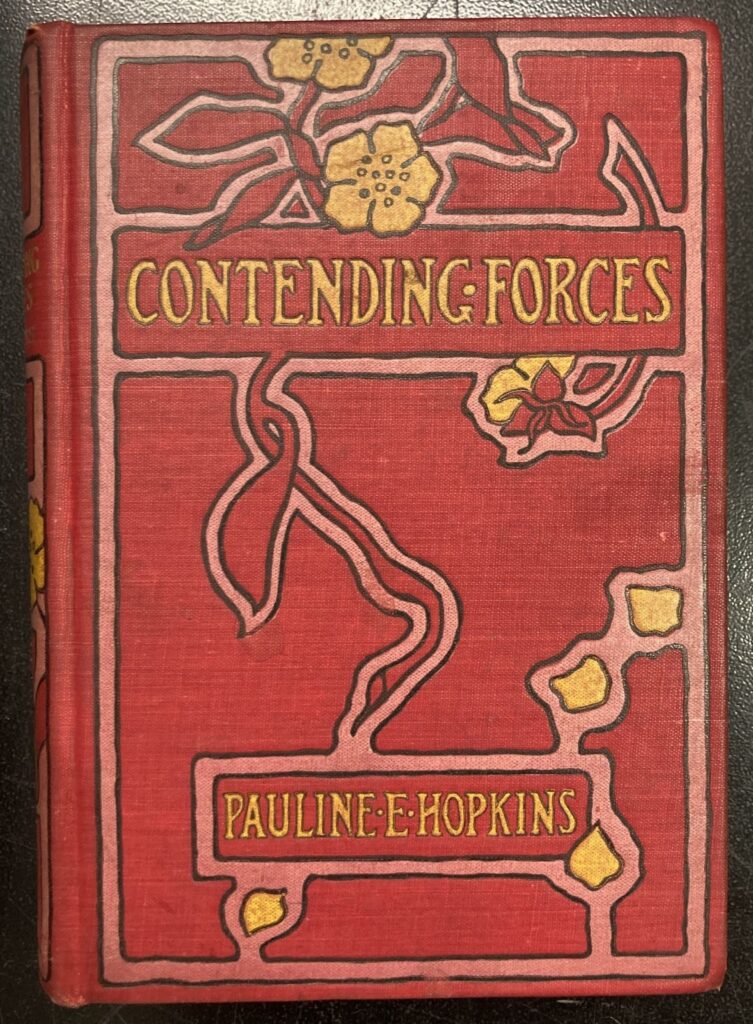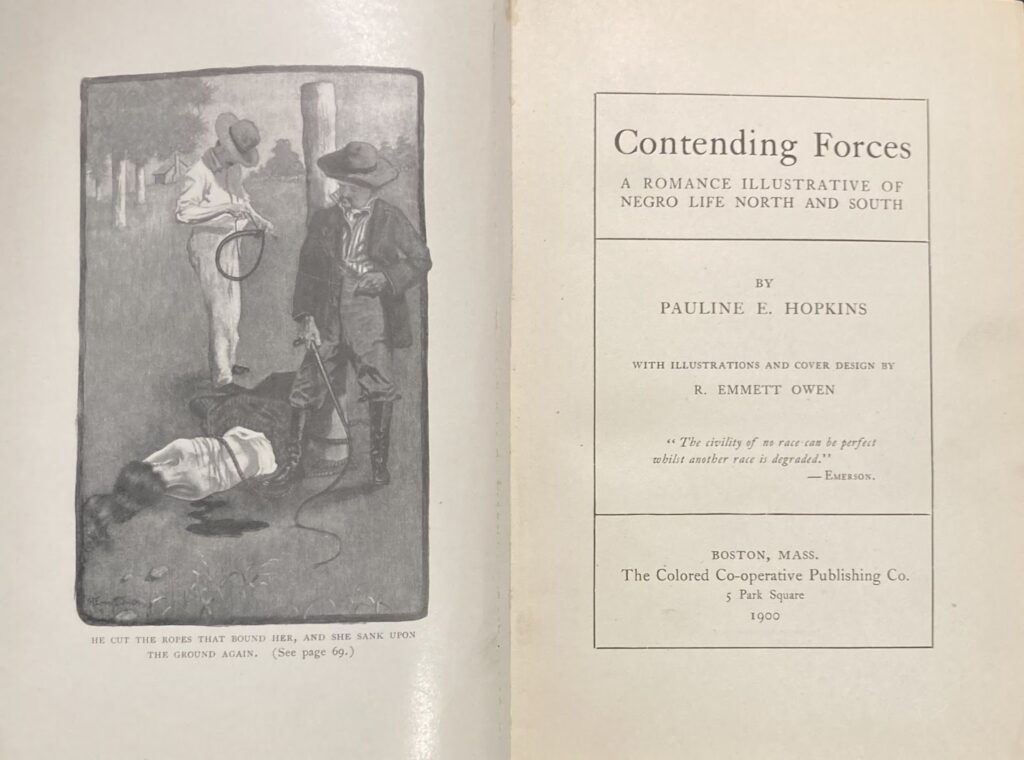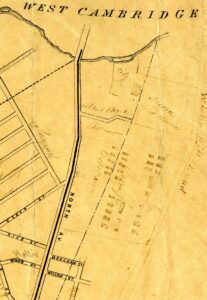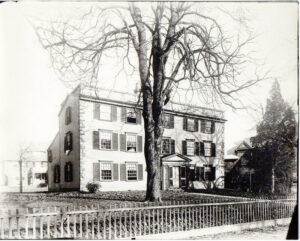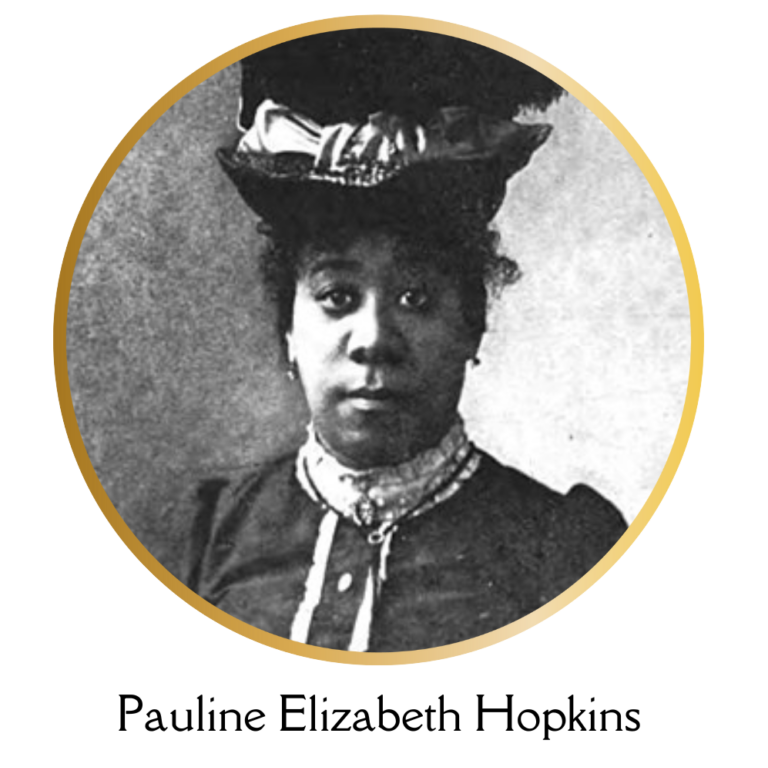
All About Pauline Elizabeth Hopkins
Biography of Pauline Elizabeth Hopkins (1859-1930)
Courtesy of Ira Dworkin, Department of English, Texas A&M University
Pauline Elizabeth Hopkins, who was born in Portland, Maine, in 1859, is best known for four novels and numerous short stories which she published between 1900 and 1903. Her best-known work, the novel Contending Forces: A Romance Illustrative of Negro Life North and South, was published in Boston, Massachusetts, in 1900 by the Colored Co-operative Publishing Company. Hopkins followed this first novel with three serialized novels – Hagar’s Daughter: A Story of Southern Caste Prejudice, Winona: A Tale of Negro Life in the South and Southwest, and Of One Blood; Or, The Hidden Self. All three serials along with several short stories by Hopkins appeared in the Colored American Magazine, a literary journal which became the Colored Co-operative Publishing Company’s primary project. During this time period, Hopkins worked as an editor at the magazine. Through her editorial work, fiction, and a substantial body of nonfiction that addressed black history, racial discrimination, economic justice, and women’s role in society among other topics, she emerged as one of the era’s preeminent public intellectuals.
While the bulk of Hopkins’s reputation rests on her output during a four-year period when she was in her forties, she wrote a musical play Slaves’ Escape; or, The Underground Railroad (later revised as Peculiar Sam; or, The Underground Railroad) that was produced in 1879 when she was twenty years old. Into the 1880s, Hopkins performed as a vocalist with her family ensemble, the Hopkins Colored Troubadours. In the 1890s, she undertook work as an orator, even while she supported herself primarily as a stenographer. And she remained active in the women’s club movement and other civic organizations. In 1898, she represented the Woman’s Era Club at the Annual Convention of New England Federation of Woman’s Clubs. And in 1901, Hopkins became a founding member of the Boston Literary and Historical Association.
At the end of the nineteenth century, Hopkins’s association with the founders of the Colored Co-operative Publishing Company provided her with the opportunity to reach a wider audience. She most prominently achieved this through the Colored American Magazine, which became the widest circulating African American literary publication prior to the rise of the National Association for the Advancement of Colored People’s Crisis magazine. From the start, the Colored American Magazine was politically engaged, and as conflicts arose among black intellectuals (often symbolized by, but by no means reducible to, Booker T. Washington’s compromise versus W.E.B. Du Bois’s agitation), the Colored American Magazine was secretly purchased by Washington’s agent Fred Moore. The magazine’s operations were moved away from the radicalism of Boston to New York. Although Hopkins did relocate to New York briefly, Moore’s purchase ended her influence and soon thereafter her career at the magazine. A testament to Hopkins’s popularity was her immediate hiring by the Voice of the Negro, a national monthly which was similar in scope to the Colored American Magazine though it was much more sharply critical of Washington and his associates. Hopkins wrote nonfiction articles for the Atlanta-based Voice of the Negro from 1904 to 1905.
Through 1905, Hopkins remained not only active, but visible. She published a pamphlet entitled “A Primer of Facts Pertaining to the Early Greatness of the African Race and the Possibility of Restoration by Its Descendents” under her own Cambridge, Massachusetts, imprint. And she addressed the William Lloyd Garrison Centenary in Boston, marking her prominence in the city’s activist-intellectual community. There are fewer known traces of her career during the remaining 25 years of her life. In 1911, she addressed the Charles Sumner Centenary in Boston which is evidence of her ongoing public profile. And, in 1916, she and Walter Wallace, the founding publisher of the Colored American Magazine, began a new venture, the New Era Magazine. The magazine’s only two issues featured a two-part short story by Hopkins as well as two biographical sketches under her byline that closely resemble her nonfiction from the Colored American Magazine. Her invitation to the Sumner event, the subsequent inclusion of her remarks in a pamphlet commemorating the event, and her ongoing association with Wallace suggest that Hopkins remained active in the decades following the end of her career at the Colored American Magazine. While fewer details are known about this period in her career, these gaps in her biography should not be presumed to indicate her inactivity. Rather, these gaps point to the need for additional research.
In August 1930, Pauline Hopkins died in Cambridge, Massachusetts, from burns sustained during a fire at her home.
Major Works by Hopkins:
- Contending Forces: A Romance Illustrative of Negro Life North and South, 1900.
- “Famous Men of the Negro Race.” The Colored American, November 1900 to October 1901.
- Hagar’s Daughter: A Story of Southern Prejudice (under the pseudonym Sarah A. Allen) serialized in The Colored American, March 1901-March 1902.
- “Famous Women of the Negro Race.” The Colored American, November 1901 to October 1902.
- Winona: A Tale of Negro Life in the South and Southwest, serialized in The Colored American, May 1902-October 1902.
- Of One Blood: Or, the Hidden Self, serialized in The Colored American, November 1902-November 1903.
- A Primer of Facts Pertaining to the Early Greatness of the African Race and the Possibility of Its Restoration by Its Descendants—With Epilogue, 1905.
- “Topsy Templeton.” New Era Magazine, 1916.
Secondary Works about Hopkins:
- Lois Brown, Pauline Elizabeth Hopkins: Black Daughter of the Revolution
- Hanna Wallinger, Pauline E. Hopkins: A Literary Biography
- “Girls’ High and the ‘Wild Facts’ of Race in Pauline Hopkins’s Of One Blood,” special issue on “Revisiting Black Boston,” edited by Kerri Greenidge and Holly Jackson, The New England Quarterly, June 2022.
*For more secondary sources (articles, book chapters, etc.) see the bibliography page at The Pauline Elizabeth Hopkins Society.
Online Resources
- “Meet Pauline Elizabeth Hopkins, a pioneering Black novelist and journalist of the early 1900s” by Michael Kuchta
- Self-Guided Tour: “Cambridge Through the Pages”
- The Pauline Elizabeth Hopkins Society
- The Digital Colored American
- Self-Guided Tour: “African American Women in 19th-century Cambridge, Massachusetts” (by The Cambridge Black History Project)
